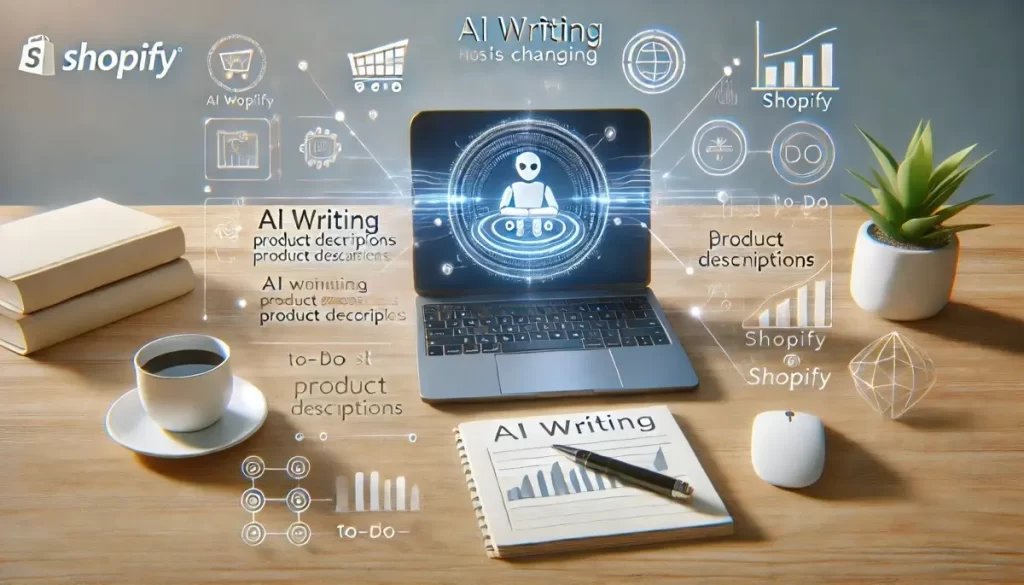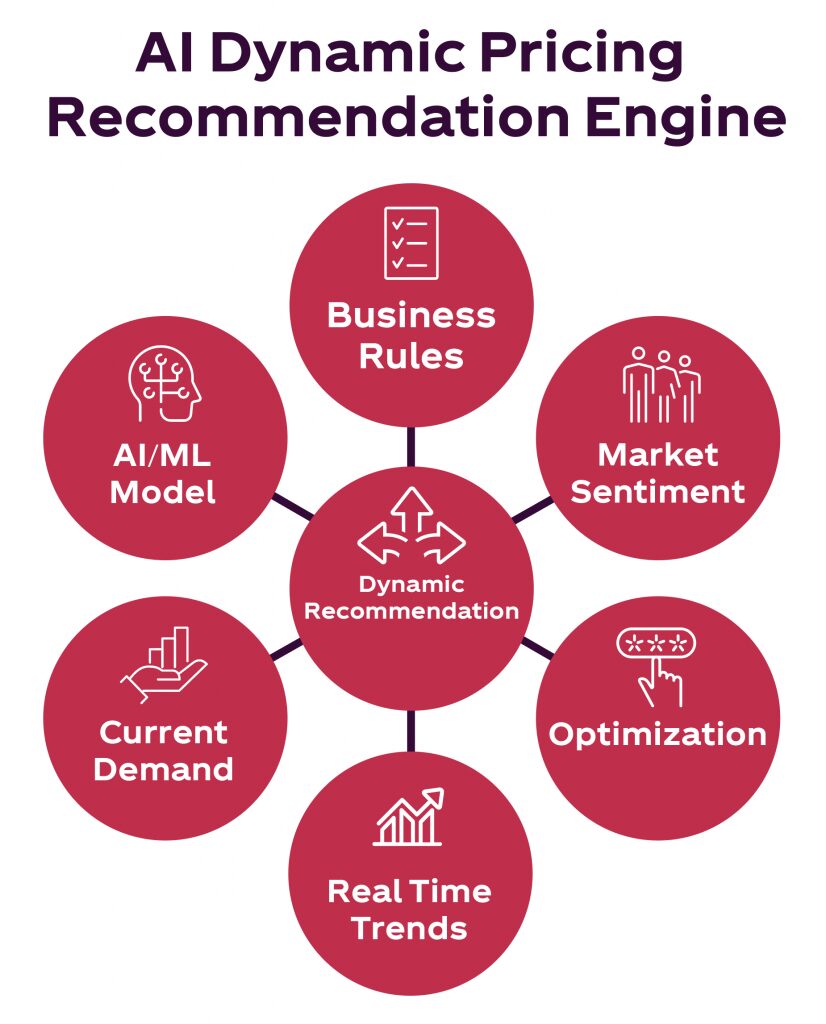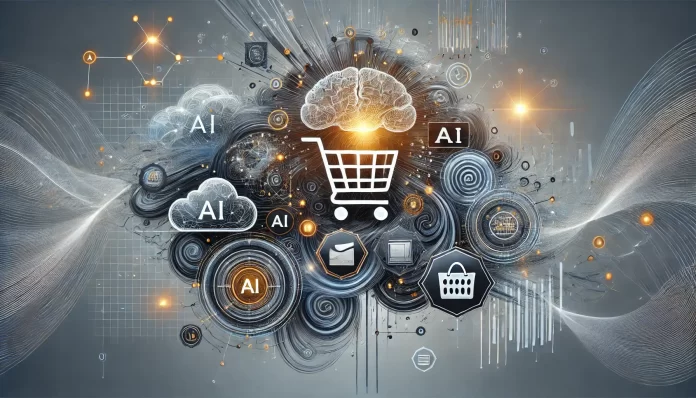Three years ago, the life of an online store manager was full of emails with different customers and you could just hope that your product suggestions would suit them. Jump to the present day and consumers want their questions answered immediately and want a personal touch. To satisfy these changing expectations, store owners are increasingly looking to artificial intelligence as a game-changer that will improve customer satisfaction and streamline operations.
Statistics tell facts. Companies that employ AI improved their sales by 29% compared to those that do not use this technology. By 2027, retailers will invest $23.32 billion in AI technology as it proves to be effective.
Consider AI as a business ally, not a substitute for human judgment. It addresses monotonous work, so you can focus on strategic decisions, strengthen customer ties, and promote creative problem-solving to achieve actual growth.
Let AI Write Your Product Descriptions
Writing hundreds of product descriptions is a time-consuming process. This is a pain that most business owners are familiar with. You are busy trying to make each product sound nice and unique over the competition. All this process is transformed with AI. Companies such as Target and Alibaba are already utilizing AI to come up with their product descriptions. They see 30% more product sales from visitors after viewing content created with AI.
So how should it be done? You input the basic product details like size, color and features to the AI. AI creates descriptions that seem natural and incorporate the right search engine keywords. Middle-Eastern retailers saved 4,800 hours/month in work time using Netscribes’ AI-powered tool. A process that used to take half an hour now takes only a few seconds.
What AI Writing Does for Your Store?

- Speed: Imagine saving weeks on catalog updates! Your team can now focus this time on market expansion and improving customer experience.
- Improved Google Rankings: AI will automatically add keywords that will enable customers to find your products when they make searches online. It understands the words that customers use when purchasing various products.
- Consistency: All product descriptions carry the same tone of your brand. No more fears of typos or missing important information about products you are selling.
- Scalability With No Stress: Process thousands of items without hiring a content staff. Add products in a flash without the normal writing and editing bottleneck that slows things down.
AI-powered Chatbots That Really Assist Customers
Current AI is more than just pre-written responses. It knows context, remembers previous conversations, and is able to detect customer frustration and escalate to human contact when necessary.
Modern chatbots do not wear out and work 24 hours a day. In Black Friday 2024, stores with AI chatbots gained 15% more sales than stores without AI.

These AI assistants understand what the customers are searching for. They analyze the history, current browsing and likes of the shopper to recommend useful options that will actually be helpful.
How to Use Chatbots Proactively
Prevention is better than cure: Chatbots can understand when your visitor feels confused or frustrated by your site. They assist before the customer becomes mad and goes to other shops.
- Find your customers: Smart bots find the serious buyers and connect them with human personnel, leaving simple queries to the bot. This will give you time to concentrate on what is important in terms of sales.
- Regain lost sales: Modern chatbots can detect checkout hesitation and provide one-on-one assistance to complete the purchase, preventing lost sales.
- Help customers globally: AI translates, enabling you to serve customers across the world without having to employ people to work in different time zones.
Show Every Customer Exactly What They Want
Amazon makes billions of changes to its prices and recommendations on products every day using AI. The system considers what you have purchased in the past, what you are looking at currently and what other similar customers like.

Customized beauty suggestions have a great effect on the buying process. As an example, Sephora has implemented progressive AI technology to personalize recommendations according to skin types and beauty objectives, which has increased click-through rates by a staggering 10-15%.
Such systems take hundreds of factors into consideration to determine what each individual desires. They go through browsing patterns, purchasing trends, age brackets, seasons and even social media presence.
Smart Recommendation Strategies
- Real-time updates: AI can make real-time changes to its recommendations based on what a person is doing.
- Unexpected Connections: Modern AI discovers unexpected relations of products that are pleasantly surprising to customers. A customer who has bought a camera can recommend other travel items that he/she has never considered purchasing.
- Anticipate future demand: AI anticipates what the customer will require in the future based on the trends. This will help you stock the right products and create marketing campaigns that will actually work.
- Social shopping: Social media sites like Pinterest rely on AI to provide a more social shopping experience. It gives customers a new experience compared to traditional online stores.
Shop with Your Phone Camera
Customers now capture any item they desire and immediately get other similar items in your shop. Photographs are more effective than written texts.
Visual search is also gaining traction in contemporary retail environments, with 62 percent of younger consumers showing interest in this innovation.

Customers upload photos, and advanced computer vision technology analyzes the visual detail, such as the texture of the fabric, color pattern, etc., to establish a connection between what the customer sees and what is in your inventory. A shopper can take a photo of a dress on Instagram and find similar ones in your store immediately.
Visual Search in Action
- Apparel search: Clothing stores like ASOS allow customers to use image search to find something similar. The system is fast, as compared to a customer taking time to scroll through the pages in search of the right products.
- Search by sight: The customer can find products they cannot describe. This offers an inventory that would not otherwise sell.
- Mobile shopping: Visual search can also be ideally used to make impulse purchases via camera phones.
- Competitive intelligence: With advanced systems, you can spot competitor products in your customer uploads to make informed decisions on pricing and inventory based on actual market data.
Prices that Vary Depending on Market Conditions
AI-powered pricing allows your prices to make adjustments automatically depending on the demand, competition, inventory level and market conditions. The fixed prices leave money on the table each day.

Retailers that implement AI pricing are boosting their revenues and profits significantly, yet maintain competitive pricing to attract customers against other competitors.
Machine learning can analyze price patterns in sales, competitor pricing levels, customer sensitivity to prices, seasonal patterns and other external factors that may change customer purchases.
Innovative Pricing Strategies
- Demand-based: AI will modify the price when the demand is high or low. This maximizes revenue at times of high demand, while holding consistent sales at times of low demand.
- Be competitive in real time: Algorithms track your competitors and shift your pricing in real time to take up the desired market position. No more price verification or delayed response when the market is changing.
- Simplify inventory: AI adjusts the prices of unselling products to make the most profit or sell the inventory at a lower price. This maintains products in the right momentum that leads to healthy cash flow.
- Reward loyal customers: Modern systems can offer a personalized price based on past purchases and loyalty that will keep the best customers happy and will attract price-conscious customers.
Know Your Requirements in Advance
Predictive analytics can transform inventory guesswork into a science. This can help businesses to maintain inventory at the optimum level, reduce costs and prevent the occurrence of stockouts that may lead to losses of sales to competitors.
Are you aware that stockouts can cost retailers as much as 4 percent of potential sales? That is a massive loss in revenue! Demand forecasting using AI raises performance by an unbelievable 47 percent compared to the outdated spreadsheet model.
AI looks at sales data, seasonal patterns, market dynamics, social media trends, and outside influences to help predict the possible demand with unparalleled precision.
LegalOn’s CEO said its AI identified TikTok trends and weather patterns that traditional forecasting could not identify and avoided the loss of 2 million worth of dead stock.
Advanced Analytics Applications
- Optimum demand forecasting: AI can analyze and crunch more data points in order to determine how and when a product demand is going to shift. This will facilitate intelligent buying to optimise between inventory and product consistency.
- Seasonal planning: The algorithms can detect the patterns months in advance and have you ready without having to make guesses on how the peaks will look..
- Security of the supply chain: AI will forecast any probable disruptions earlier and provide alternatives to minimize business interruption in case suppliers experience setbacks or failure to deliver the goods on time.
- Smart clearance timing: Smart clearance timing enables prioritization of when and how much to discount slow-moving inventory in order to maximize revenue and maintain healthy profit margins by using predictive models.
Guard Your Company Against Fraud
As online fraudsters continue to come up with more complicated methods of stealing from businesses and people, AI-driven fraud detection has become essential.
Fraud costs billions of dollars every year in every sector. Traditional security tools do not identify small-scale fraud patterns, and AI identifies suspicious patterns through high-level pattern discovery and behavior analysis.
Advanced Fraud Prevention
- Behavioral identification: AI monitors the normal behavior of customers and alerts to transactions where the behavior has changed drastically.
- Instant risk analysis: The algorithms analyze various risk factors at once and make quick decisions to ensure that legitimate transactions continue, and the fraudulent ones are blocked before any loss can happen.
- Continuous learning: AI-based fraud systems learn on their own and train to counter new criminal approaches without the need to manually update the system.
- Full protection: The newest fraud protection applies to every customer touchpoint, whether it is through mobile applications, websites, or social media.
Conclusion
Generative AI is the largest opportunity in online business since the inception of eCommerce. Businesses that take action instead of waiting will have the future.
Whether it is content that saves thousands of hours or predictive analytics that prevents costly mistakes, these six applications provide a direct result.
Are you having difficulties with writing product descriptions, inventory management or customer inquiries? Start with the biggest operational pain point that you have! Prioritizing a single challenge will highlight the usefulness of AI and increase the confidence of your team to use it more actively. Looking to explore the potential of AI for your online venture? AI consulting services can help you enhance your digital strategy and improve sales performance.
Online shopping is evolving fast, and the expectations of customers are increasing. Retailers can maintain a lead by forecasting the needs of shoppers with AI.
FAQ’s
What is generative AI in eCommerce?
Generative AI in eCommerce refers to using AI models to create personalized content—such as product descriptions, images, chat responses, and recommendations—helping businesses enhance customer experience and boost sales efficiency.
What can we expect from generative AI in e commerce?
In eCommerce, we can expect generative AI to deliver highly personalized shopping experiences, smarter product recommendations, automated content creation, virtual try-ons, and improved customer support, ultimately driving higher engagement and sales.
How can AI be used in e-commerce?
AI can be used in e-commerce for personalized product recommendations, dynamic pricing, customer service chatbots, fraud detection, inventory management, and generating marketing content, making online shopping more efficient and customer-centric.
What is the future of AI in ecommerce?
The future of AI in eCommerce lies in creating hyper-personalized shopping experiences, immersive virtual try-ons, smarter supply chain automation, and AI-driven customer support, enabling retailers to boost efficiency, engagement, and sales growth.
How many ecommerce businesses use AI?
As of 2025, approximately 80–89% of e-commerce businesses globally are either actively using AI or conducting pilot tests within their operations HelloRepDemandSage. In the U.S., about 33% of B2B e-commerce firms have fully implemented AI, while another 47% are evaluating it



